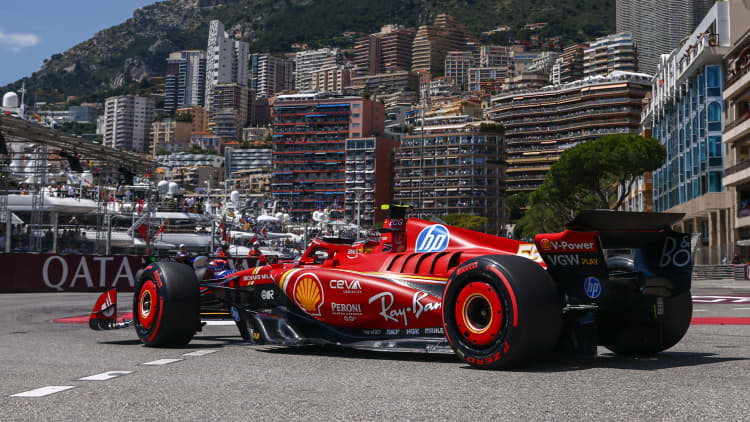The world of F1 is a high-octane spectacle that captivates millions of fans every year. It’s a sport defined by cutting-edge technology, breathtaking speed, and the pursuit of perfection. But behind the glamour of race day and the roar of engines lies a complex and multi-billion-dollar industry that shapes the world of F1. From the engineering marvels that are Formula 1 cars to the intense competition among drivers, F1 is a universe where split-second decisions and groundbreaking innovation make all the difference.
This article explores the fascinating aspects of the world of F1, offering a glimpse into what makes it one of the most thrilling and expensive sports on the planet. We’ll dive into the technological advancements, the role of teams and drivers, and how the sport has evolved into a global phenomenon that goes far beyond the racetrack.
The Billion-Dollar Machines: Engineering Masterpieces in the World of F1

Formula 1 cars are often described as the most advanced machines on wheels, and for good reason. Each car is a masterpiece of engineering, designed to be as fast and efficient as possible while navigating circuits that demand precision at every turn. The cars in the world of F1 are developed with the help of wind tunnels, computer simulations, and some of the most skilled engineers in the automotive industry.
The cost of building an F1 car can easily exceed several million dollars, with teams pouring massive resources into research and development. From aerodynamics to engine performance, every component is scrutinized and optimized to give drivers the best chance of victory. This focus on innovation has led to some remarkable technological breakthroughs in the world of F1. For instance, the introduction of hybrid engines in 2014 revolutionized the sport by combining traditional internal combustion with electric power, pushing both speed and sustainability to new limits.
Despite their high price tags, F1 cars have incredibly short lifespans. With new regulations and advancements coming every season, teams are constantly designing and building new cars to stay competitive. This relentless pursuit of innovation is what keeps the world of F1 moving forward and ensures that no two seasons are ever the same.
The Role of Drivers in the World of F1: More Than Just Speed
While F1 cars are technological marvels, it’s the drivers who bring them to life on the track. In the world of F1, the relationship between driver and machine is crucial. Each race demands more than just raw speed; it requires strategic thinking, split-second decision-making, and an intimate understanding of the car’s capabilities.
Drivers in the world of F1 are among the most elite athletes in the world. The physical demands of driving a Formula 1 car at over 200 mph, coupled with the mental strain of staying focused for two hours in high-pressure situations, makes F1 driving one of the toughest jobs in sports. Drivers train rigorously to maintain peak physical condition, and their reflexes must be finely tuned to react to changes on the track in the blink of an eye.
But the role of an F1 driver extends beyond the race track. Drivers are also responsible for providing critical feedback to their teams, helping engineers fine-tune the car’s performance for each circuit. In this way, the driver acts as a bridge between the team and the machine, shaping the future of the sport with every lap they complete.
Teams and the Business of Formula 1
The world of F1 is not just about the drivers and the cars; it’s also about the teams that operate behind the scenes. Each team in Formula 1 is a well-oiled machine in its own right, consisting of hundreds of engineers, mechanics, strategists, and other specialists, all working toward the singular goal of winning races.
In recent years, the business aspect of F1 has grown considerably, with top teams like Mercedes, Ferrari, and Red Bull Racing becoming billion-dollar enterprises. Sponsorship deals, media rights, and merchandising contribute to the vast financial ecosystem that surrounds the world of F1. For teams, securing sponsorship is vital to funding the enormous costs of developing competitive cars.
At the same time, Formula 1 has increasingly embraced its global appeal, expanding into new markets in Asia, the Middle East, and North America. This global expansion has helped the sport attract more fans, increase revenue, and secure its place as one of the most lucrative motorsports in the world.
The Evolution of Technology in the World of F1
The world of F1 has always been at the cutting edge of automotive technology, and its influence extends far beyond the racetrack. Many of the innovations developed in F1 have found their way into everyday road cars, improving safety, efficiency, and performance. From advanced aerodynamics to carbon fiber construction, F1 has played a significant role in shaping the future of the automotive industry.
Perhaps the most significant recent advancement in the world of F1 has been the push toward sustainability. The introduction of hybrid power units was just the beginning; now, Formula 1 is committed to becoming carbon neutral by 2030. This ambitious goal is driving further innovation in energy efficiency, renewable fuels, and environmentally friendly technologies.
In addition to sustainability, F1 has also focused on improving safety. Over the years, numerous safety innovations have been introduced, including the Halo device, which protects drivers from head injuries during crashes. These advancements have made the world of F1 not only faster and more exciting but also safer for drivers and spectators alike.
Read More: Cleaner Roads Ahead: Exploring Eco-Friendly Engine Technologies
F1 Circuits: The Global Stage of the World of F1
One of the most captivating aspects of the world of F1 is the diversity of circuits that make up the racing calendar. From the twisting streets of Monaco to the high-speed straights of Monza, each circuit presents its own unique set of challenges, requiring drivers and teams to adapt their strategies accordingly.
Monaco is known for its tight corners and lack of overtaking opportunities, making qualifying positions crucial. On the other hand, circuits like Silverstone or Spa-Francorchamps are known for their fast, sweeping turns, testing both the aerodynamics of the car and the skill of the driver.
The ever-changing conditions of these circuits, combined with the unpredictability of weather, add another layer of complexity to the world of F1. A single mistake on a wet track can end a driver’s race, while a perfectly timed pit stop can be the difference between victory and defeat. This blend of technology, human skill, and unpredictability is what makes the world of F1 so enthralling.
Conclusion
The world of F1 is a place where speed, technology, and human ambition come together in the pursuit of excellence. From the billion-dollar machines that tear up the track to the drivers who risk it all for glory, Formula 1 is a sport that pushes the boundaries of what is possible. Behind the glamour and spectacle lies a complex and fiercely competitive industry that continues to evolve with each passing season.
As the sport moves forward, the world of F1 will undoubtedly face new challenges, whether in the form of sustainability initiatives or technological advancements. But one thing is certain: Formula 1 will remain at the forefront of motorsport, thrilling fans with its blend of precision, power, and passion.










